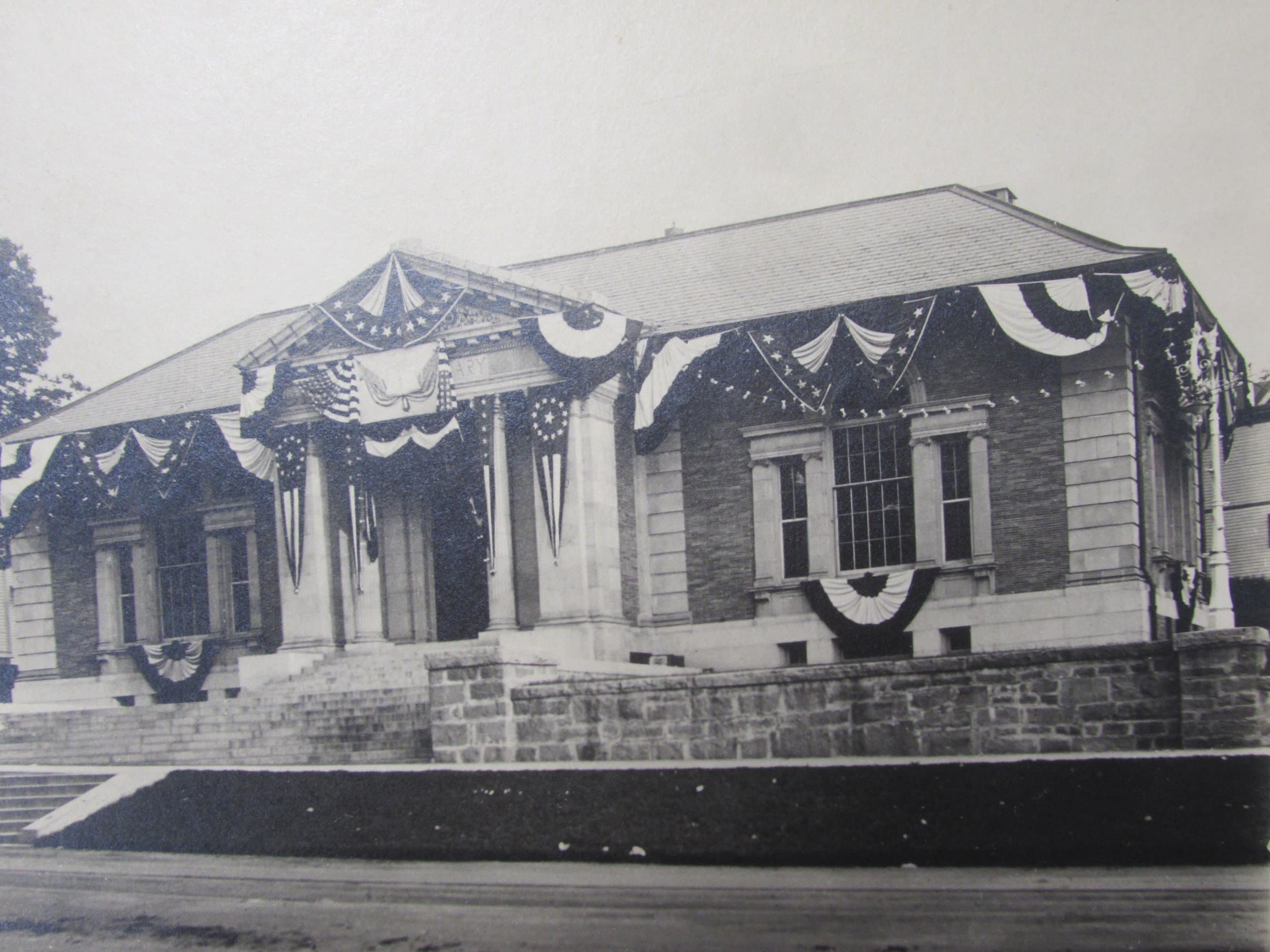
(Photo/Courtesy of Marlborough Historical Society)
MARLBOROUGH – The noted architectural firm of Peabody and Stearns was hired to design the West Main Street location of the Marlborough Public Library, which was completed in 1904. The firm had designed Worcester City Hall and the Stock Exchange Building at 53 State Street in Boston and eventually served as architect for about forty major public buildings.
And just like the wide variety of architectural designs Carnegie libraries adopted, the range of building styles employed by Peabody and Stearns from 1870 to 1917 is ample. The Renaissance Revival in the Marlborough library harkens back to Roman temples of knowledge.
One reason the very public Marlborough Public Library was made more widely known was the popularity of postcard writing. Sending cards via the postal service was particularly useful when daily double deliveries enabled senders to notify friends that they were coming to visit later that same day. The bustling Marlborough community was very proud of its library, as evidenced by dozens of postcards printed over the years, showing the building at different angles and seasons, as well as in black and white, and color.
There are far fewer postcards, if any, for deltiologists to collect of the Marlborough Mechanics Institute, begun in 1853 to improve the literacy and numeracy of working people, especially in technical subjects. Essentially, mechanics institutes were precursors to adult education classes. The Marlborough Mechanics Institute eventually voted in May of 1870 to give its entire book collection to the town to use for a free public library.
Libraries began in Marlborough even earlier. In 1792 a social library was set up whereby 60 members paid dues annually, in order to borrow books. Then in 1828 it merged with the free library of the First Parish Church. By paying an annual fee of a dollar, in 1859, individuals could utilize the library materials, which were stored in the Union Block. In ten years the number of donated books doubled.
At the next Town Meeting in 1870 it was decided to establish a free public library with $1000 and the dog license fees of $333. A mere 15 square feet of space was assigned in town hall to house the library. With its growing library users and collections, the library needed more space, benefactors and/or philanthropists.
A package of letters, endorsements, and statements accompanied Mayor Walter B. Morse’s visits to U.S. Steel’s retired president Andrew Carnegie in New York. Finally in April of 1902 a hopeful letter from Carnegie’s personal secretary James P. Bertram came, stating that if Marlborough leaders would ensure annual funding, $30,000 would be forthcoming. John A. Frye and the Honorable S.H. Howe deeded the lot at the corner of West Main Street and Bates Avenue to the city and Reverend Asa Packard’s mansion was razed.
The process sped up after a Christmas night fire took down city hall. All but the thousand books in circulation burned. The Grand Army of the Republic Post 43 offered its library room while a library building was constructed. The first brick was laid on September 11, 1903. Manual labor installed steel shelving and fireproof doors. Construction wrapped up in 1904.
Of the 1,700 public libraries that Carnegie helped fund in the U.S. about 800 are still in use.












